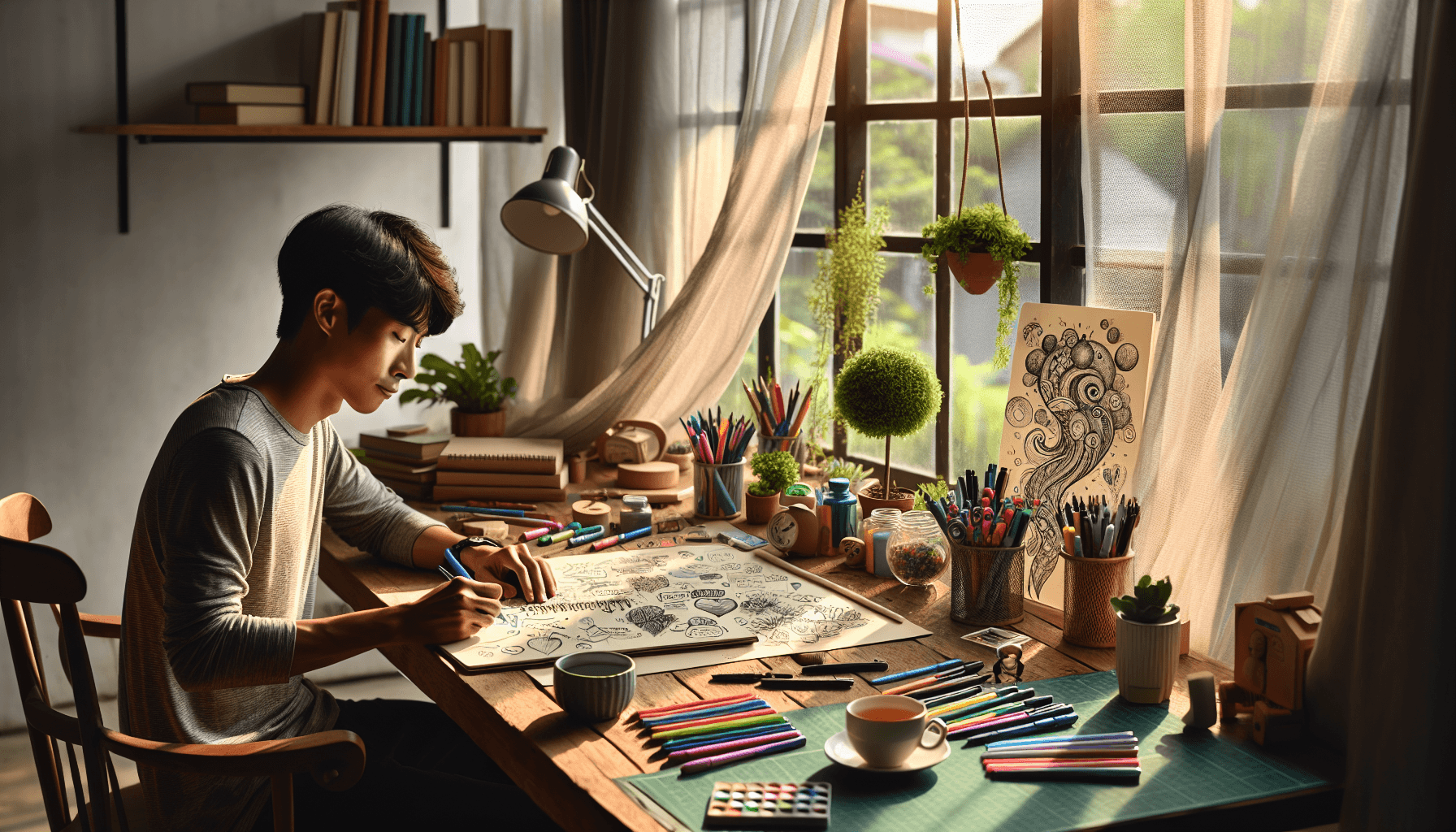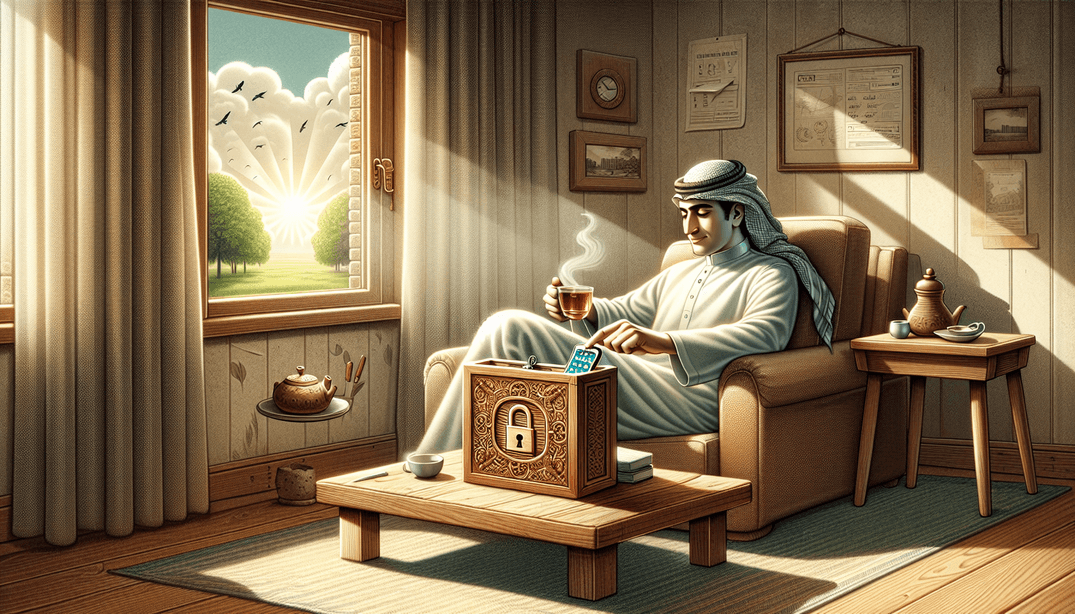In a world brimming with stressors, finding effective ways to decompress is essential for maintaining mental well-being. One creative method that has gained traction is sketchnoting. This technique merges the art of drawing with note-taking, providing a unique outlet to manage stress and boost mental clarity.
Whether you're a seasoned artist or simply enjoy doodling, sketchnoting can be a valuable addition to your stress-management toolkit.
Sketchnoting isn't solely about creating beautiful art; it's about visually expressing ideas, which can lead to increased relaxation and a sense of accomplishment. This article explores why sketchnoting is a powerful stress buster, the science behind its effectiveness, the tools you'll need, and tips to get started.
We'll also delve into creative ways to use sketchnoting for stress management, share real-life success stories, and encourage you to embrace this art form.
Why Sketchnoting is a Stress Buster
Sketchnoting is a stress buster because it engages both the creative and logical sides of your brain. When you put pen to paper, you're not just jotting down words; you're creating a visual representation of your thoughts.
This process can be incredibly calming, as it allows you to focus on the present moment and let go of worries about the future or regrets about the past.
One advantage of sketchnoting is its ability to simplify complex information. By breaking down ideas into visuals, you not only make them easier to understand but also reduce the mental clutter that often accompanies stress. This clarity can lead to a more relaxed state of mind, making it easier to tackle daily challenges with a fresh perspective.
As Rebecca Jackson notes, "Sketching your day can give insights into where you are spending your time," highlighting how this practice can enhance self-awareness and stress management (Jackson, 2020).
Side note: sketchnoting doesn't require any special artistic skills. Anyone can pick up a pen and start sketching their thoughts. The emphasis is on expressing ideas rather than creating a masterpiece. This low-pressure approach makes sketchnoting accessible to everyone, allowing people from all walks of life to experience its stress-relieving benefits.
For more insights on managing stress effectively, you might find our article on Enhance Well-being by Managing Stress Effectively helpful.
The Science Behind Drawing and Stress Relief
The science behind drawing and stress relief is fascinating. Studies have shown that engaging in creative activities like drawing can reduce cortisol levels, the hormone associated with stress. When you're focused on creating art, your brain enters a state of flow, where you lose track of time and become fully immersed in the activity.
This state is known to enhance well-being and reduce stress.
A compelling statistic from a 2016 study reveals that 75% of participants experienced a significant reduction in cortisol levels after engaging in art-making activities for just 45 minutes (Kaimal et al., 2016). This demonstrates the profound impact creative activities can have on stress reduction, emphasizing the importance of incorporating such practices into daily life.
Moreover, drawing activates the brain's reward system, releasing feel-good chemicals like dopamine. This not only enhances mood but also boosts motivation and concentration. When you sketchnote, you're not just relieving stress in the moment; you're also training your brain to respond to stress in healthier ways over time.
Moreover, drawing has been linked to improved cognitive functions such as memory and problem-solving. By translating thoughts into visuals, you're creating new neural pathways that enhance your ability to process information. This can be particularly helpful in managing stress, as it equips you with better tools to navigate life's challenges.
To further explore the connection between stress and cognitive functions, check out Explore Research Insights on Stress and Memory Loss.
Tools You Need to Start Sketchnoting
To start sketchnoting, you'll need a few basic tools. The most essential tool is a notebook or sketchpad. Choose one that feels comfortable to write on, as you'll be spending a lot of time with it. Many sketchnoters prefer notebooks with unlined pages to allow for maximum creativity, but lined or dotted pages can also work well.
Another important tool is a set of pens or markers. Keep in mind that you don't need an extensive collection to get started. A few fine-tip pens in different colors can be enough to create engaging sketchnotes. If you enjoy adding color to your sketches, consider investing in a set of colored pencils or markers.
For those who prefer digital tools, there are numerous apps available for sketchnoting on tablets or smartphones. These apps often come with features like layers, undo options, and a variety of brushes, making it easy to create and edit your sketchnotes.
Whether you choose traditional or digital tools, the key is to find what works best for you and encourages you to keep sketchnoting.
Tips for Getting Started with Sketchnoting
Starting with sketchnoting can be both exciting and daunting. One tip is to begin with simple shapes and lines. Don't worry about creating perfect drawings; focus instead on capturing ideas and concepts. As you practice, your skills will naturally improve, and you'll develop your own unique style.
Another helpful tip is to use symbols and icons to represent ideas. This not only saves time but also makes your sketchnotes more visually appealing. For example, a light bulb can represent an idea, while a heart can symbolize something you love. Experiment with different symbols to see what resonates with you.
Note that sketchnoting is a personal process, so there's no right or wrong way to do it. Some people prefer to sketchnote in silence, while others find background music or podcasts helpful. Find a routine that relaxes you and makes sketchnoting a joyful experience.
Remember, the goal is to decompress and manage stress, so keep the process as enjoyable as possible.
For those interested in exploring other methods to manage stress, consider Manage Stress with Aromatherapy and Essential Oils.
Creative Ways to Use Sketchnoting for Stress Management
Sketchnoting can be used in various creative ways to manage stress. One method is to create a gratitude journal. Each day, take a few moments to sketch something you're grateful for. This practice can shift your focus from stressors to positive aspects of your life, promoting a sense of well-being.
Another creative use for sketchnoting is to visualize your goals. By sketching your aspirations, you create a visual reminder of what you're working towards. This can be incredibly motivating, especially during times of stress when it's easy to lose sight of your objectives. A big plus here is that visualizing success can boost your confidence and reduce anxiety.
Mind mapping is another effective technique. Use sketchnoting to brainstorm solutions to problems or plan out projects. The act of organizing thoughts visually can help reduce overwhelm and clarify your next steps. This approach not only manages stress but also enhances productivity and creativity.
To learn more about balancing productivity and creativity, visit Balance Productivity and Creativity for Stress Management.
Real-Life Success Stories from Sketchnoters
There are countless success stories from individuals who have embraced sketchnoting as a stress management tool. Take, for example, Sarah, a busy professional who found herself overwhelmed by work demands. By incorporating sketchnoting into her daily routine, she was able to organize her thoughts, prioritize tasks, and significantly reduce her stress levels.
Then there's Tom, a university student who struggled with exam anxiety. Through sketchnoting, he discovered a new way to study that improved his retention and understanding of complex subjects. The process of visual learning not only eased his anxiety but also improved his academic performance.
These stories highlight the transformative power of sketchnoting. It's not just about managing stress; it's about enhancing your overall quality of life. Whether you're a professional, student, or anyone in between, sketchnoting can offer a creative outlet that brings clarity and calmness to your day-to-day life.
Conclusion: Embrace the Art of Sketchnoting
In conclusion, sketchnoting is a versatile and accessible tool for stress management. By tapping into your creativity, you can find a sense of peace and clarity that might otherwise be elusive in a busy world. Remember, it's not about being an artist; it's about expressing yourself and finding joy in the process.
As you embrace the art of sketchnoting, you'll likely discover new ways to manage stress and enhance your well-being. The benefits are numerous, from improved cognitive function to increased relaxation. So why not give it a try? You might just find that sketchnoting becomes an essential part of your stress-management routine.
Call to Action: Share Your Sketchnoting Journey
We invite you to share your sketchnoting journey with us. Whether you're a beginner or a seasoned sketchnoter, we'd love to hear how this practice has impacted your life. Share your experiences, tips, and even your sketchnotes with others who might benefit from this creative outlet.
Remember, your story could inspire someone else to start their sketchnoting journey. Together, we can build a community of individuals who use art as a means to decompress and manage stress. So, grab your pens, get creative, and join the conversation!
If you're interested in exploring more creative outlets, consider Relieve Stress with Calligraphy and Creative Techniques.
References
Jackson, R. (2020, September 29). Sketching for solace and sanity. Retrieved from https://rebeccajlj.com/2020/09/29/sketching-for-solace-and-sanity/
Kaimal, G., Ray, K., & Muniz, J. (2016). Reduction of cortisol levels and participants’ responses following art making. Art Therapy: Journal of the American Art Therapy Association.






